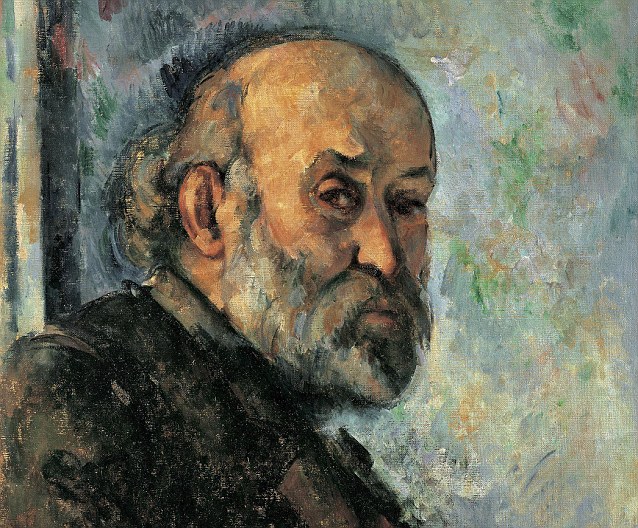Into the lightness

Cezanne was not a very good painter in the beginning. He lacked in spontaneity, he copied Manet too much, and he made it too obvious his need to be loved. The subjects he chose missed enthusiasm. His pallet comprised mainly of dark and somber colors. His brush strokes were heavy, overdone and at times sounded childish. He used far too many layers of paint which gave his painting a feel of heaviness. This was probably the cause of so much criticism of his art at the time.
Cezanne’s early paintings were those of a man who was in search of his own destiny. He was trying to escape from his father’s disapproval of his being an artist. He was in disaccord with many of his contemporaries. He was overwhelmed with anger and buried it behind a full beard. Thank God, one day he went on a stroll across the French countryside with a fellow painter and mentor: Pissarro.
Pissarro helped him convert his gloom and awkwardness into something new. Pissarro’s tranquillity, his light brush strokes, and gentle colors undoubtedly influenced Cezanne’s style. He brought him what he lacked, the beauty of lightness.
Unknowingly, this novel touch of lightness spread its magic over Cezanne’s ill-contained anger. He gradually gained composure and started to let his energy flow freely. This new found freedom, this luminous delicacy, probably, led him down a formidable new path of creativity. It offered him the pleasure to adroitly observe and to strongly feel. And, it ultimately, instilled in him the assertive passion for painting.
His composition became sturdy and composed. His brushstrokes ceased to be heavy but short and striking. He barely used any layers anymore and started to paint with a most powerful and outstanding effect. His palette was enriched with subtle and forceful colors.
With this lightness came beauty, with beauty came the love to create and with love came perfection.